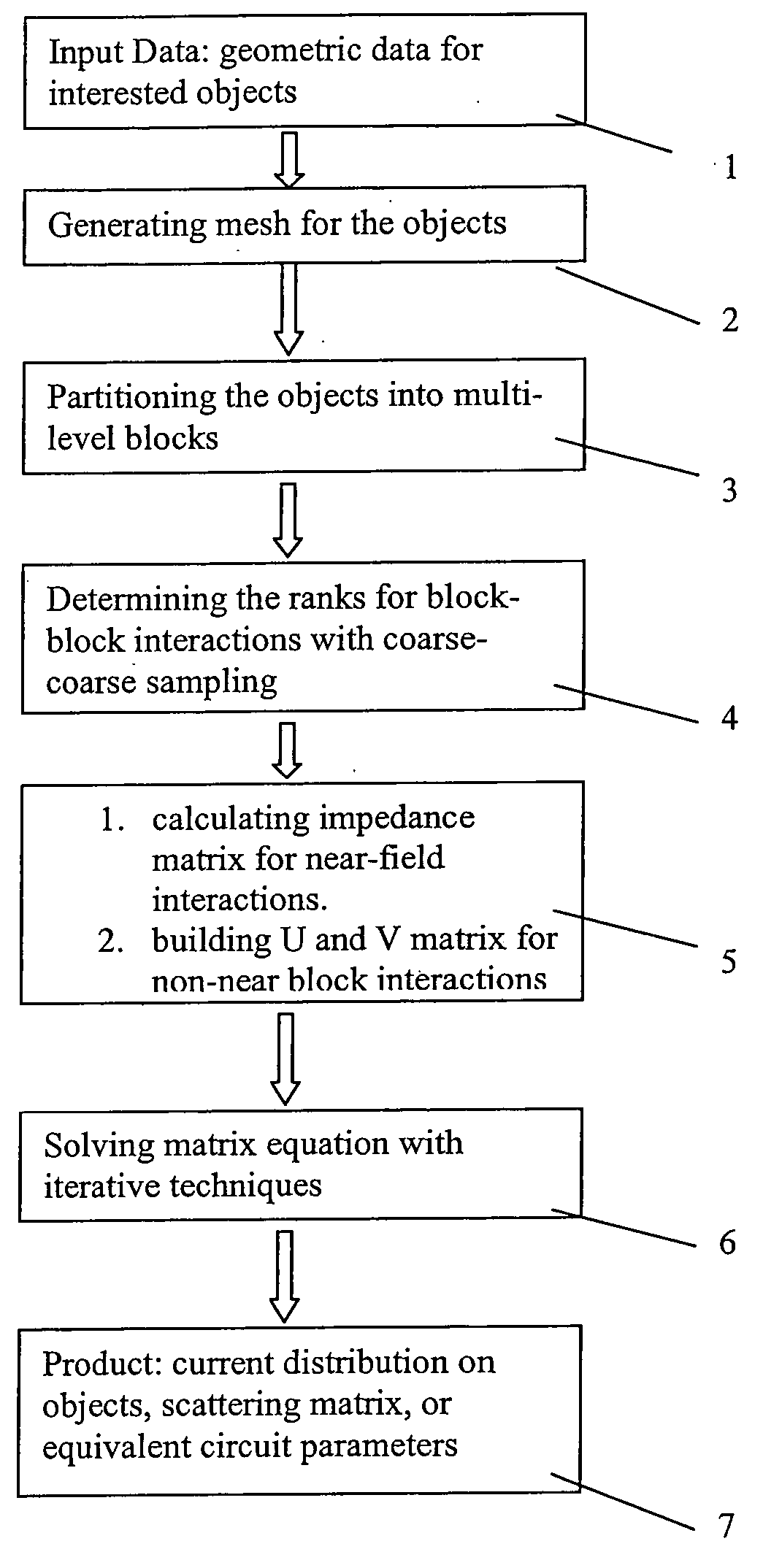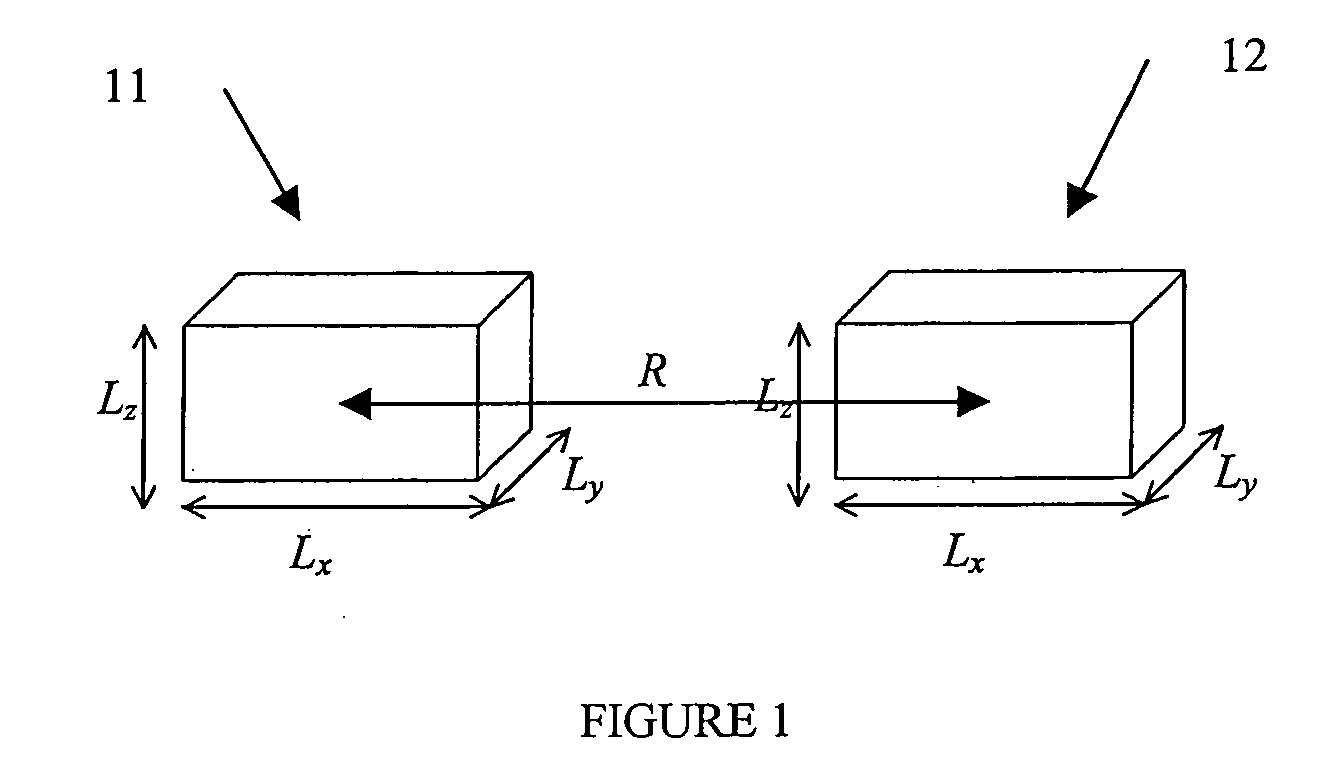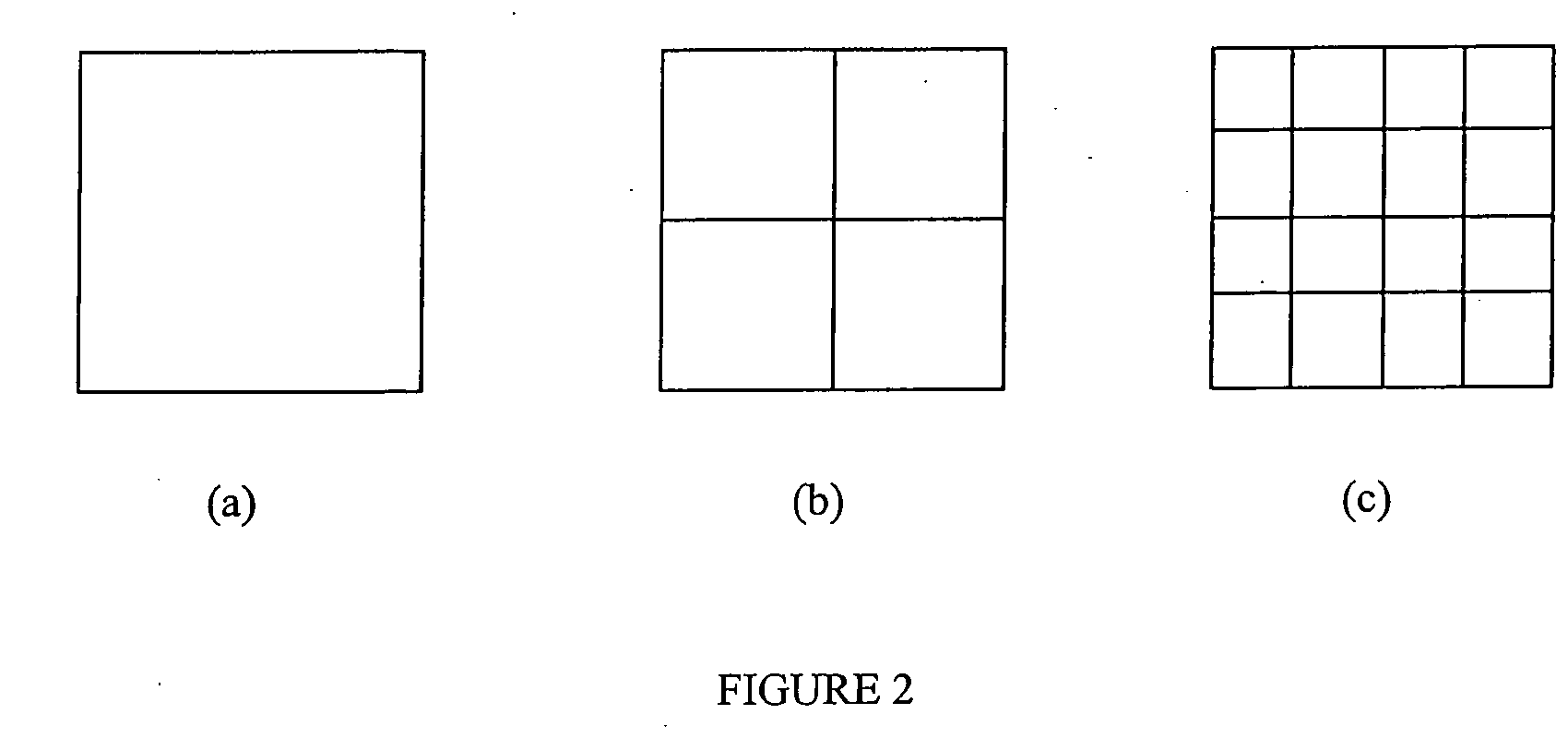Fast solution of integral equations representing wave propagation
a technology of integral equations and wave propagation, applied in computations using denominational number representations, instruments, design optimisation/simulation, etc., can solve the problems of increasing the functionalities of electronic products, reducing the size of electronic devices, and increasing data transmission rates, so as to reduce the number of unknowns, speed up computation, and high efficiency
- Summary
- Abstract
- Description
- Claims
- Application Information
AI Technical Summary
Benefits of technology
Problems solved by technology
Method used
Image
Examples
Embodiment Construction
[0052]FIG. 13 shows the steps of a method which is an embodiment of the invention. In a first step (step 1) the method loads input data, describing the situation to be analyzed. In a second step (step 2) the method generates a basis in which the analysis will be performed (which may be a grid covering the region being analyzed, or a set of basis functions as described below). In a third step (step 3) the basis is partitioned into blocks at multiple levels. The impedance matrix is also partitioned into multi-level blocks. In a fourth step (step 4) the rank of the block-block impedance matrix is calculated with coarse-coarse sampling (defined below). In a fifth step (step 5) the impedance matrix for the near-field interactions is determined. For the non-near block impedance matrix, dense-rank and rank-dense sampling (defined below) is used to construct U and V matrices. In a sixth step (step 6) the matrix equation is solved iteratively. This allows the method to generate (step 7) the ...
PUM
 Login to View More
Login to View More Abstract
Description
Claims
Application Information
 Login to View More
Login to View More - R&D
- Intellectual Property
- Life Sciences
- Materials
- Tech Scout
- Unparalleled Data Quality
- Higher Quality Content
- 60% Fewer Hallucinations
Browse by: Latest US Patents, China's latest patents, Technical Efficacy Thesaurus, Application Domain, Technology Topic, Popular Technical Reports.
© 2025 PatSnap. All rights reserved.Legal|Privacy policy|Modern Slavery Act Transparency Statement|Sitemap|About US| Contact US: help@patsnap.com



